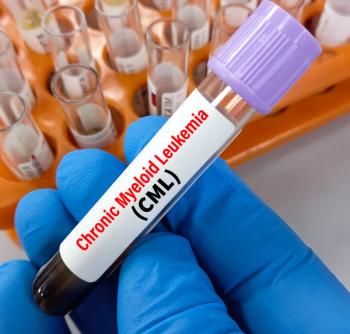
- June 2014 Women's Health
- Volume 80
- Issue 6
Pharmacist Provider Status
Could the effort to achieve pharmacist provider status bring the broad pharmacy community together?
Could the effort to achieve pharmacist provider status bring the broad pharmacy community together?
Could the effort to achieve pharmacist provider status become the vehicle to bring the broad pharmacy community together? Could that level of broad support from the pharmacy community accomplish something monumental for the profession?
Inherent in these 2 questions is the idea that, at least at times, different segments of pharmacy have worked against one another in the legislative arena. However, the past few years have seen a growing coalescence of pharmacy organizations around common interests. In January 2014, the Patient Access to Pharmacists’ Care Coalition (PAPCC) was formed. With at least 22 members and growing, the PAPCC is an inclusive coalition that represents a broad array of pharmacy and nonpharmacy stakeholders who want to give patients better access to the patient care services provided by pharmacists in all outpatient settings.
The American College of Clinical Pharmacy seems to be the only major national pharmacy organization that has decided not to be a PAPCC member. In their position paper, they state, “A legislative proposal that would add pharmacists to the list of eligible providers under 1861 of the Social Security Act would do little to expand opportunities for delivering care to patients unless it were to include coverage for a defined process of care that pharmacists could bill for.” PAPCC members feel that a process of care should not be defined in a federal statute, but rather that each state should determine for which services a pharmacist should be able to bill Medicare, through the state’s scope of pharmacy practice legislation.
In 2000, North Carolina was able to pass legislation that created a clinical pharmacist practitioner (CPP). We were able to work with the medical director for Medicare’s Fiscal Intermediate to allow a CPP to bill for medical care as a provider. The reasoning was that since our CPPs came along after physician assistants (PAs) and family nurse practitioners (FNPs), both of which are recognized as providers, CPPs should be allowed to function and bill like an FNP or a PA. This allowed innovative pharmacists to establish collaborative practice agreements with physicians, and in some cases place a CPP in a physician’s office and bill Medicare for disease management services.
Unfortunately, a new medical director realized what we were doing was not allowed because pharmacists were not recognized as providers in Section 1842 or 1861 of the Social Security Act as a supplier of medical or other health services. This resulted in many of these innovative practices closing. If the practice had a large number of Medicare patients, this practice model became financially difficult to maintain. Thus, from my perspective, having pharmacists included on the Medicare provider list is essential. The PAPCC has the right approach with HR 4190, which will amend Section 1861 (s) (2) of the Social Security Act to include pharmacist services furnished by a pharmacist licensed by state law. This bill limits the location where payment can be made to a medically underserved area or population, or a health professional shortage area.
By limiting the scope of practice to underserved areas, the bill could meet an unmet need and give pharmacists a foot in the door. It could also limit opposition and bring down the cost of the legislation, making it more likely that HR 4190 could get passed in the next few years. However, this will not happen unless the entire pharmacy community gets behind it. It will only happen if we write our legislators asking for their support and give funds to pharmacy political action committees.
Of course, getting provider status is not an end goal unless there is a scope of practice in place that allows an expanded role for pharmacists. Equally important is a funding source to pay for these new pharmacist-delivered services. That is why there are now state-level initiatives around pharmacist provider status developments. Real victory for pharmacy will only occur when we have all 3 elements in place.
Many have said that they have not seen this much support and cohesion across pharmacy and nonpharmacy stakeholders before. Hopefully, this is true. However, federal provider status will not be passed unless we all get on board and do our part. What are you doing to make passage more likely? Remember that getting provider status is only part of the process that will allow pharmacists to care for patients at the top of their license.
Mr. Eckel is a professor emeritus at the Eshelman School of Pharmacy, University of North Carolina at Chapel Hill. He is emeritus executive director of the North Carolina Association of Pharmacists. A lifelong advocate for the profession of pharmacy, Mr. Eckel has lectured on pharmacy issues and trends in all 50 states and has traveled to 6 continents to promote, and educate audiences on, the role of the pharmacist.
Articles in this issue
over 11 years ago
Patient Resources: Coupons & Copaysover 11 years ago
Living with an Overactive Bladderover 11 years ago
The Heroin Epidemic and Abuse-Deterrent Formulationsover 11 years ago
Pet Peevesover 11 years ago
Contraception Controversy: The Pharmacist's Perspectiveover 11 years ago
Case StudiesNewsletter
Stay informed on drug updates, treatment guidelines, and pharmacy practice trends—subscribe to Pharmacy Times for weekly clinical insights.






















































































































































































































